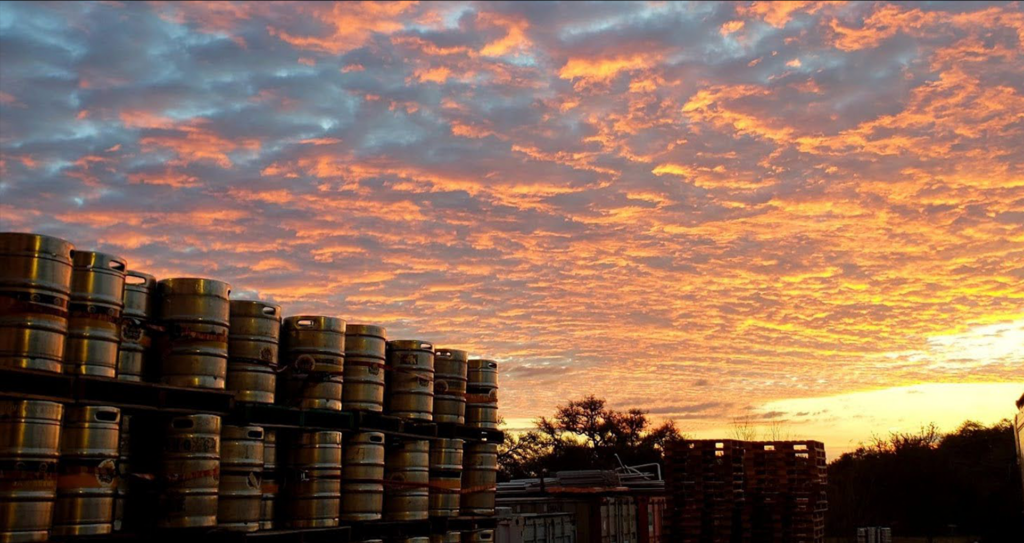Today’s post was contributed by Debra Anazonwu, MS, a science editor and writer. You can follow her on LinkedIn.
While Riddhiman Garge, first author of a study published in the March 2024 issue of G3: Genes|Genomes|Genetics, was earning his PhD at the University of Texas, he met brewer Chip McElroy. McElroy, who owns Live Oak Brewing Company and has a Ph.D. in biochemistry, was curious about what happens to brewing yeast inside fermentation tanks. The pair teamed up with Garge’s colleagues to investigate some aspects of this question.
The importance of brewing yeast
In addition to being a classic research organism for genetics and molecular biology, Saccharomyces cerevisiae, sometimes called brewer’s yeast, has a host of commercial uses and is especially important in beverage fermentation—the global beer market is now worth more than $750 billion.
Despite its economic impact, however, brewer’s yeast has been understudied in its beer-making context. The G3 study investigates one aspect of commercial fermentation: how ale yeast proteins change throughout successive fermentations.
The impact of serial repitching on the yeast proteome
During brewing and fermentation, yeast must adapt to increasingly harsh conditions, including fluctuating nutrient, ethanol, and oxygen levels. (Indeed, too much alcohol stresses both yeast and humans!) The commercial practice of serial repitching may also impact the yeast proteome.
In serial repitching, brewers harvest yeast cells at the end of a fermentation cycle and use them to inoculate (or pitch) a new batch of beer. Commercial brewers repitch eight to ten times, stopping as the flavor, aroma, and yeast viability deteriorate over time.
To better understand molecular changes associated with serial repitching, researchers sampled populations of Weihenstephan Wheat yeast directly from the fermentation tank. They applied shotgun mass spectrometry to measure proteomic changes throughout two fermentation cycles separated by fourteen rounds of serial repitching. The time course began with Batch 1—the freshly prepared yeast stock—and ended after fourteen repitches (Batch 15), and sampling was performed at comparable time points across the four days of brewing.

Results
Garge et al. report that protein abundance at the earliest fermentation timepoints was the most different compared to the rest of the timepoints. Batch 15 had elevated synthesis enzymes for ergosterol, which helps mitigate the stress of low-oxygen environments; however, batch 15 had fewer isobutyraldehyde synthesis enzymes. Isobutyraldehyde is linked to a grainy flavor profile that is considered desirable for some beers but an off-flavor in others. This dataset offers a starting point for tweaking flavor and strain characteristics in commercial and craft breweries.
The authors also set up an interactive web interface cataloging the fermentation-based protein changes they observed to aid hobbyists, scientists, and brewers.
Next steps
Further analysis of the study data and future studies of proteins and metabolite changes across fermentation and repitching will help brewers engineer yeast strains, optimize brewing workflows, and study trends that undergird domestication processes. In addition, such real-world research can help make inferences about known and unknown biology. For instance, the function of many S. cerevisiae genes is unknown. “By looking at [these genes] in new contexts, maybe we can infer function,” Garge says. “People think that if you have a biology degree, you can only study things in the lab. But this study [demonstrates] that there are interesting biological processes going on in the everyday world,” Garge says.
References
Systematic profiling of ale yeast protein dynamics across fermentation and repitching
Riddhiman K Garge, Renee C Geck, Joseph O Armstrong, Barbara Dunn, Daniel R Boutz, Anna Battenhouse, Mario Leutert, Vy Dang, Pengyao Jiang, Dusan Kwiatkowski, Thorin Peiser, Hoyt McElroy, Edward M Marcotte, Maitreya J Dunham
G3: Genes|Genomes|Genetics. March 2024; 14(3).
DOI: 10.1093/g3journal/jkad293




